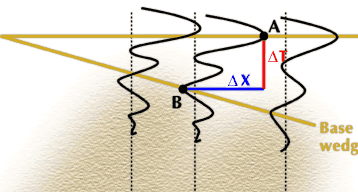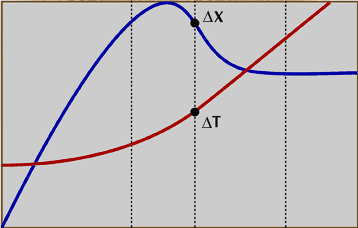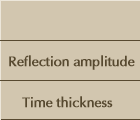 |
 |
| ©2000 AGI |

The
thin-bed regime starts when
the one-way traveltime thickness of the wedge is one-fourth the dominant
wavelength of the illuminating wavelet (or when the
two-way traveltime is one-half the dominant wavelength) and then extends
across the thinner portion of the wedge. The wedge-model animation shows
that the magnitude of the reflection amplitude decreases and that the
time difference between the reflections from the top and base of the bed
stays constant as the bed thickness continues to decrease to smaller values.
The key distinctions between the seismic reflection process for thick
beds and thin beds are summarized in the following table.
 |
 |
 |
 |
||
 |
 |
||